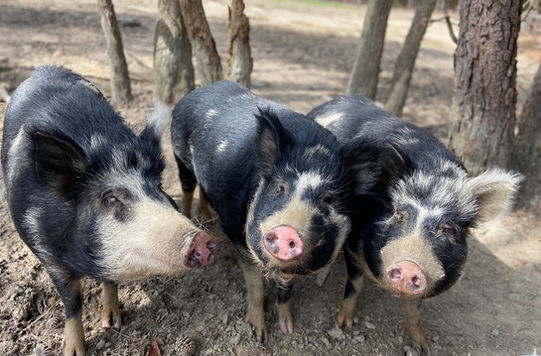
Godiah Spray Tobacco Plantation, 1667
The Godiah Spray Tobacco Plantation at Historic St. Mary’s City re-creates 17th Century family life on a tobacco farm, including a planter's house, tenant house and tobacco barns. The plantation is home to Godiah Spray's family and servants, cows, chickens, and pigs.
Explore the Site
Life on the Plantation
Given the great expense of labor, it was more cost effective to raise tobacco to trade for manufactured goods than to make those goods in the Maryland colony. The colonists improved their chances for financial success by growing tobacco, but the process was labor intensive and depleted the soil of its nutrients. Despite the difficulties and skills needed, tobacco was used as currency to fuel the colonial economy.
See colonial commerce in action at Cordea's Hope in Town Center.
VISITOR EXHIBITS
Master Spray's Family
VISITOR EXHIBITS
Plantation Laborers
Maryland colonists used indentured servants, as well as enslaved Africans and Native people, to work their tobacco plantations.
Travis Parno, Ph.D. and Director of Research at Historic St. Mary's City, shares the story of Antonio, an enslaved African, to illustrate the history of enslavement in the first century of colonial Maryland.
VISITOR EXHIBITS
Behind the Scenes
VISITOR EXHIBITS
Storytime on the Farm
Join Beth and Aaron as they try their hand at preparing Sowced Oysters
VISITOR EXHIBITS
Lectures
Guest Valerie Hall will discuss how English settlers in the Maryland colony imported domesticated animals (including cattle, sheep, horses, pigs, goats, and dogs) to the New World. Studies of colonial efforts from a variety of time periods suggest that domesticates were introduced by colonists both for sustenance and to engineer landscapes for future agriculture. Learn how these practices forever shaped the landscape of the Chesapeake region.















